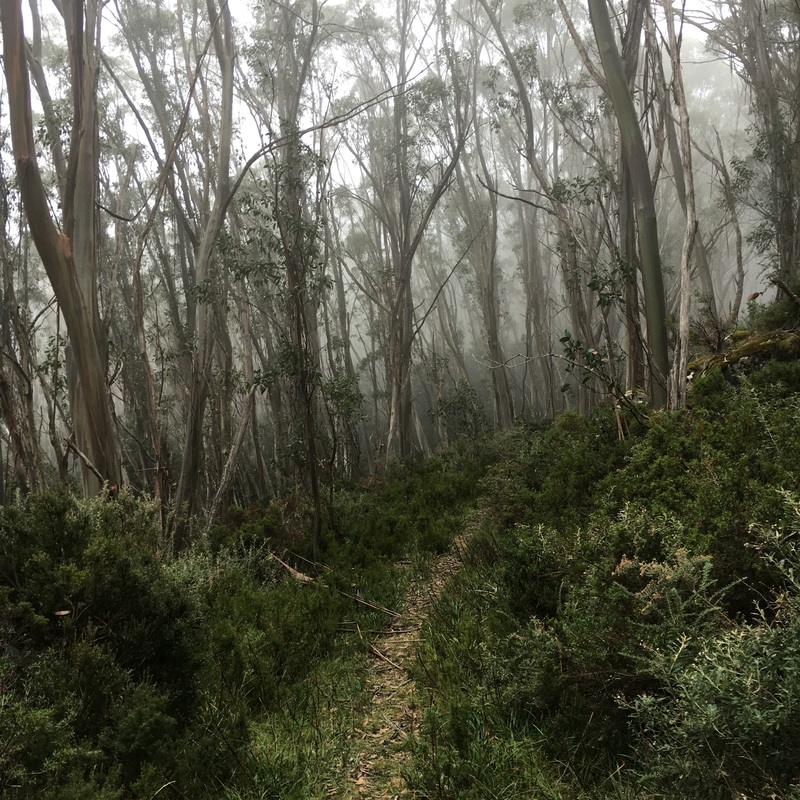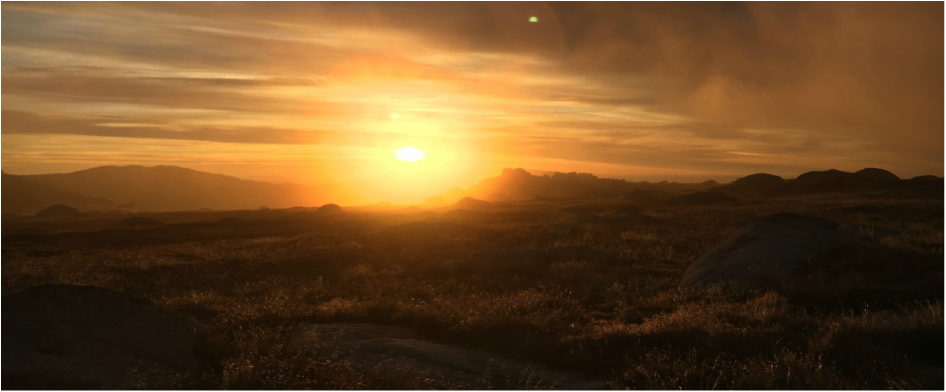I made a commitment to attempt the Seven Peaks run with my friend Duncan in Australia, and it seemed silly to fly from New Zealand to Australia just for a weekend. So, being the restless person that I am, it seemed obvious to find an adventurous way to get from the run to the nearest big city. Having not done any walking, mountaineering or navigating for a while, when I heard about the Alpine Track, I thought this would be a good opportunity to work on some of my skills. The AAWT is a 670km track that passes through no towns or villages, you have to organise food drops in advance so you can collect it during the walk. Everybody that I spoke to about this walk seemed very shocked that I was gong to attempt it alone, and some were convinced there was no way I could complete it. This just gave me more determination to get to the end!
I set off from the small town of Walhalla bright and early on the morning of March 24th 2016, full of energy and determination. Within an hour, I had already been given a good taste of things to come. I was walking through a jungle type environment, overgrown, wet and humid. This came along with lots of spiderwebs constantly covering my face and leeches on a mission to climb up my legs. I had done some research into the poisonous spiders in Australia but as they crawled across my body, my mind went blank, so I assumed the worst of each little critter. The terrain soon became steep and loose, and I wondered what I had let myself in for. Even with all the research I had done into this track, I didn't anticipate the terrain being so tough.
It wasn't until day five that the mist cleared briefly at the top of a mountain treating me to a beautiful view. I had climbed many mountains by this point but each summit that I reached was rewarded with nothing but clouds. And even after getting this brief view, I was then into the clouds pretty much for the next five days.
For me, I felt like the track was divided into three sections, each of which I had planned would take me about ten days. And each was separated by a food drop that I had hidden in the forest before starting the track.
The first section involved a lot of navigation. Overgrown, steep, trackless mountains made up most of the beginning section, and even when there could have been a beautiful view, forests surrounded me in every direction. I had known all along that there would be sections that had no visible tracks and I would have to navigate, so it wasn't a shock to me. But it seemed that all the hardest elements came at once: overgrown tracks, fog, trees, rain, heaviest pack, blisters, walking extra distance to get water. These were all in the first section.
The second section was the part where it all started to get very cold at night. I was at a much higher altitude all the time, and much more exposed due to the forest thinning out. Every morning I stepped out of my tent to find a frost. Each night I would be woke up at about 02:00 and lay awake in my sleeping bag wearing everything I had with me, trying to get a little more sleep before the 5:45 alarm. My routine was based around packing things up wet and hoping the afternoon would be warm enough to dry out all my heavy, soaked kit.
The first section involved a lot of navigation. Overgrown, steep, trackless mountains made up most of the beginning section, and even when there could have been a beautiful view, forests surrounded me in every direction. I had known all along that there would be sections that had no visible tracks and I would have to navigate, so it wasn't a shock to me. But it seemed that all the hardest elements came at once: overgrown tracks, fog, trees, rain, heaviest pack, blisters, walking extra distance to get water. These were all in the first section.
The second section was the part where it all started to get very cold at night. I was at a much higher altitude all the time, and much more exposed due to the forest thinning out. Every morning I stepped out of my tent to find a frost. Each night I would be woke up at about 02:00 and lay awake in my sleeping bag wearing everything I had with me, trying to get a little more sleep before the 5:45 alarm. My routine was based around packing things up wet and hoping the afternoon would be warm enough to dry out all my heavy, soaked kit.
The third section was the home straight. The majority of the terrain consisted of walking tracks or four-wheel-drive tracks. Overall, the altitude was going down even though many hills still had to be climbed. I managed to increase my daily walking distance. My feet were in a lot of pain by this point, and I had also pulled a muscle in my right leg which was causing difficulties bending my knee. This section also had quite a few huts available to sleep in so I tried to spend nights in those, not my tent, but on various occasions this just didn't happen. Mostly as I got lost!
After 24 days of hiking, freezing, boiling, camping, sweating and not washing, I walked into the Namadgi visitor centre that marks the end (or beginning) of the Australian Alpine Walking Track. The track should be a total distance of 670km but I added on at least 20kms searching for water sources and losing the track. I learnt a lot about myself and my capabilities, and I had quality, peaceful time in nature to do a lot of thinking about my life and my direction.
This walk has made huge impact on my life. I would definitely recommend having time alone in the countryside like this, away from your daily demands and comforts, to gather your thoughts and feelings. Go wild!
This walk has made huge impact on my life. I would definitely recommend having time alone in the countryside like this, away from your daily demands and comforts, to gather your thoughts and feelings. Go wild!
This was definitely one of the most intense and challenging journeys I have been on. Please click on the link below to make a donation to The SEED Project. Even just a couple of pounds or dollars makes a big difference to this small charity.
To get a real feel for the walk, here is a video made by Benedict Armitage.
Proudly powered by Weebly











